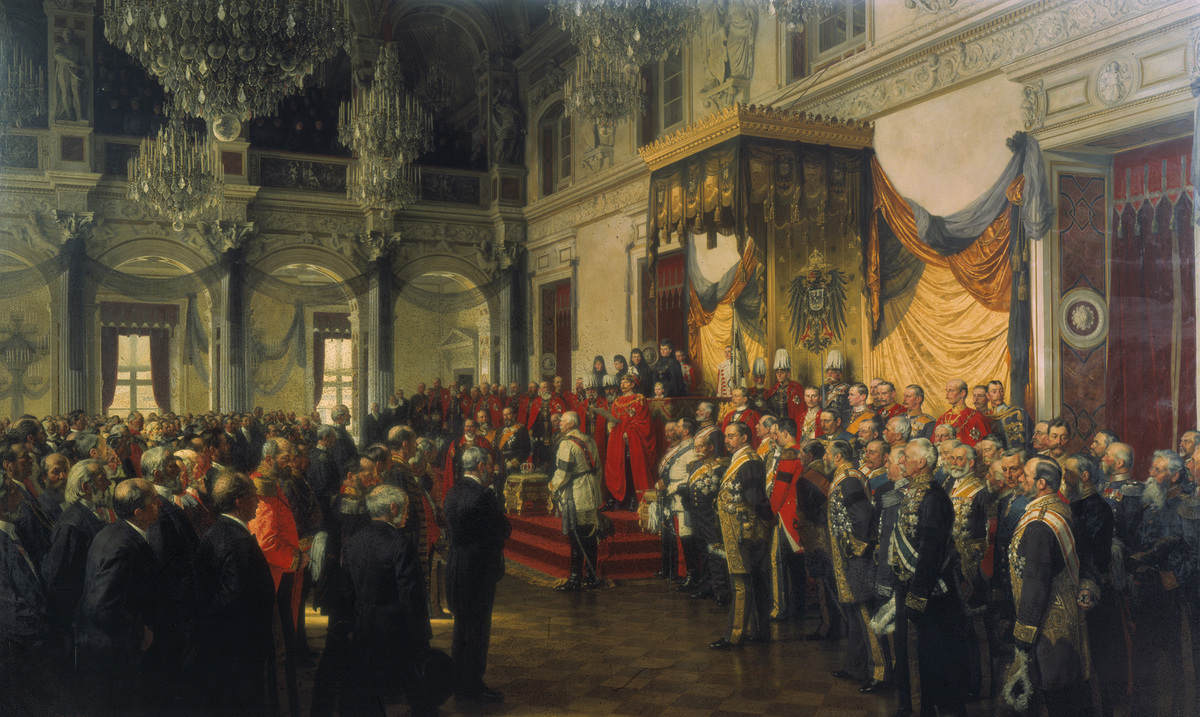Abstract
As with Anton von Werner’s three renderings of the Kaiser
Proclamation of January 18, 1871, this large-scale painting—it is 3.9 by
6.4 meters in size (12 ft. 8¾ in. x 21 ft. ¾ in.)—has an interesting
provenance. The event itself was orchestrated by the young Kaiser
Wilhelm II to show that the recent deaths of his grandfather, Kaiser
Wilhelm I (in March 1888) and his father, Kaiser Friedrich III (in June
1888) had in no way compromised the stability and power of the German
Empire [Reich]. Wilhelm II is shown
in the red mantle of the Order of the Black Eagle. The second and third
most important monarchs in Germany are pictured to the left of the
throne: the Prince Regent of Bavaria and the King of Saxony, as are the
lord mayors of the three Hansa cities Lübeck, Hamburg, and Bremen. Other
royal princes and dignitaries can be seen in the foreground to the right
of the throne. Wilhelm II’s mother, Kaiserin Victoria, shown here in
mourning dress, stands behind him, as does his eldest son, Crown Prince
Wilhelm. In the left half of the canvas, numerous Reichstag deputies
have assembled to pay eager homage to their new monarch. Notable,
however, is the absence of the Social Democrats and the deputies
representing Alsace and Lorraine, all of whom have stayed away in
protest.
Although Werner executed a preliminary study for the painting in
1888, he would not complete the final version until 1893. The changes
that Werner made to the original study between 1888 and 1893—changes
requested by the Kaiser himself—are extremely telling. Dramatic events
had unfolded in this five-year period—the most significant of which was
Bismarck’s dismissal from office by Wilhelm II in March 1890. In the
final version of the canvas, Werner moved the former chancellor further
away from the diplomats and other dignitaries on the right and closer to
the Reichstag deputies on the left. He also rendered Bismarck distinctly
stooped with age. Unlike Werner’s depiction of January 18, 1871, it was
not necessary to change the color of Bismarck’s white Cuirassier
uniform. A few years later, when a black-and-white woodcut of this giant
canvas was executed by A. von Baudouin and published in the journal
Moderne Kunst (1896), one of the
artist’s intentions was transparent: a three-part foldout was necessary
to make the politicians and courtiers as recognizable as possible, and
an accompanying identification list was provided.
